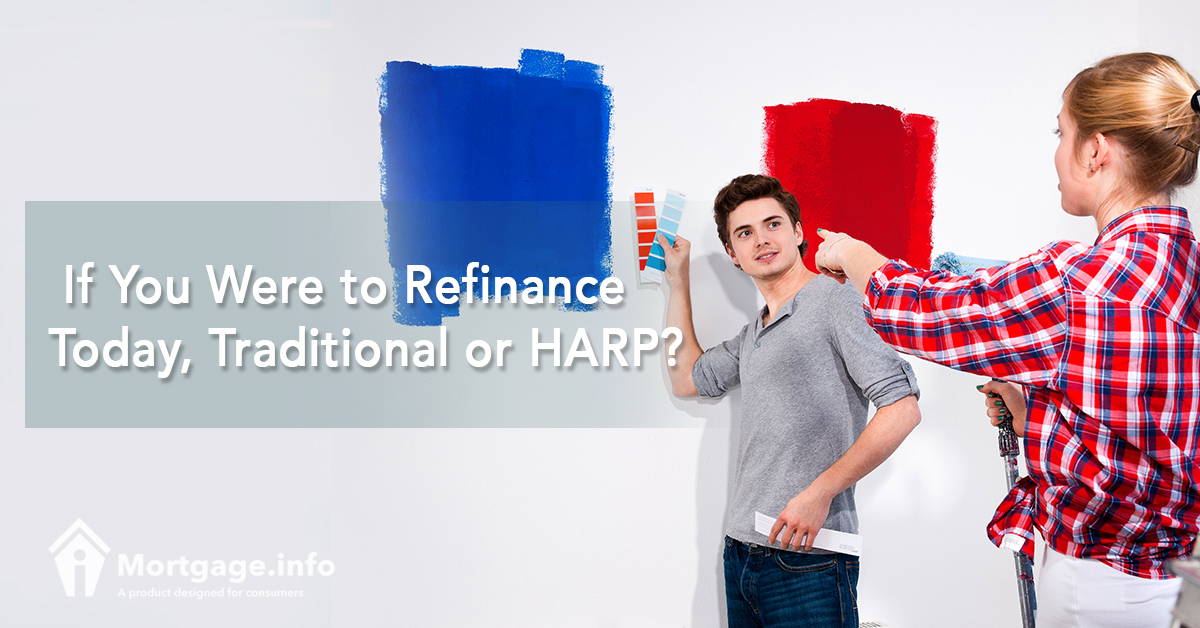Refinancing is the road homeowners take when they want to bring down the costs of keeping a mortgage. In so doing, they take advantage of lower rates and lower mortgage payments. But with so many refinance programs to choose from and sometimes a little time to spare, it’s easy to get lost in the way. Is it safe to settle for a traditional refinance? Or, should you go for HARP®? Do you they compete or complement each other?
Traditional Refinance: Rate-and-Term Changes, Cash-Out
Traditional refinance is as commonplace as you think. You are contemplating a traditional refinance when you:
Rate-and-term
- Want to change the rate of your loan (which is the quintessential reason for refinancing).
- Want to change the term of your loan (either shorten or lengthen it).
Cash-out
- Want to tap home equity in exchange for cash to consolidate debts, fund a vacation, or pay for your child’s tuition.
In order to do any of those things, you need your finances to be in order. Just like the time you first applied for your mortgage, you need to undergo a similar process to refinance your old loan.
This is all the more important if you plan to do a cash-out, your loan-to-value ratio or LTV should be lower than or at least 80%. LTV measures your outstanding mortgage balance vis-a-vis your home’s current market value.
The problem is, not all homeowners have 80% LTV and some even owed more than what their home is currently valued. This happens when your outstanding mortgage balance exceeds the current value of your property. This was prevalent during the real estate bubble and crisis between 2006 and 2012 when home prices went under and foreclosures followed.
Having little to no equity left in the home has prevented some homeowners from refinancing their mortgage.
Against this backdrop, what’s left for homeowners?
HARP®: High LTVs and No Underwater Limits
The Home Affordable Refinance Program® is created exactly to solve the problem of high LTV ratios. HARP® targets borrowers with little to no equity or have LTV ratios higher than 80%. The LTV limit under HARP® is basically “no underwater limits”.
Since its launch in 2009, the program has helped millions of homeowners refinance their underwater mortgages. By refinancing under HARP®, you get these benefits:
- Lower your monthly payment.
- Reduce your interest rate.
- Build equity faster (applicable to shorter term loans).
- Secure a fixed mortgage rate (for FRMs).
- Lower closing costs.
HARP®’s lower closing costs are attributed to its lack of appraisal and fewer documents to verify income, etc. Lenders can even qualify a borrower by simply documenting that he/she has made at least 12 months of mortgage payments. The borrower must be current on the mortgage, that is no 30-day or so late payments within the last six months and only one late payment allowed during the last 12 months.
The mortgage, which has to be owned or acquired by Fannie Mae or Freddie Mac, must be originated on or before 31 May 2009.
So, where do you go from here?
We have laid down the basics of the two refinance options. To put simply:
- If your personal and financial circumstances remain unchanged or have improved, LTV ratio included and want to take cash out, pick traditional refinance.
- If you own a conventional mortgage and have seen your home value decline and thus been denied of a traditional refinance, opt for HARP®.

